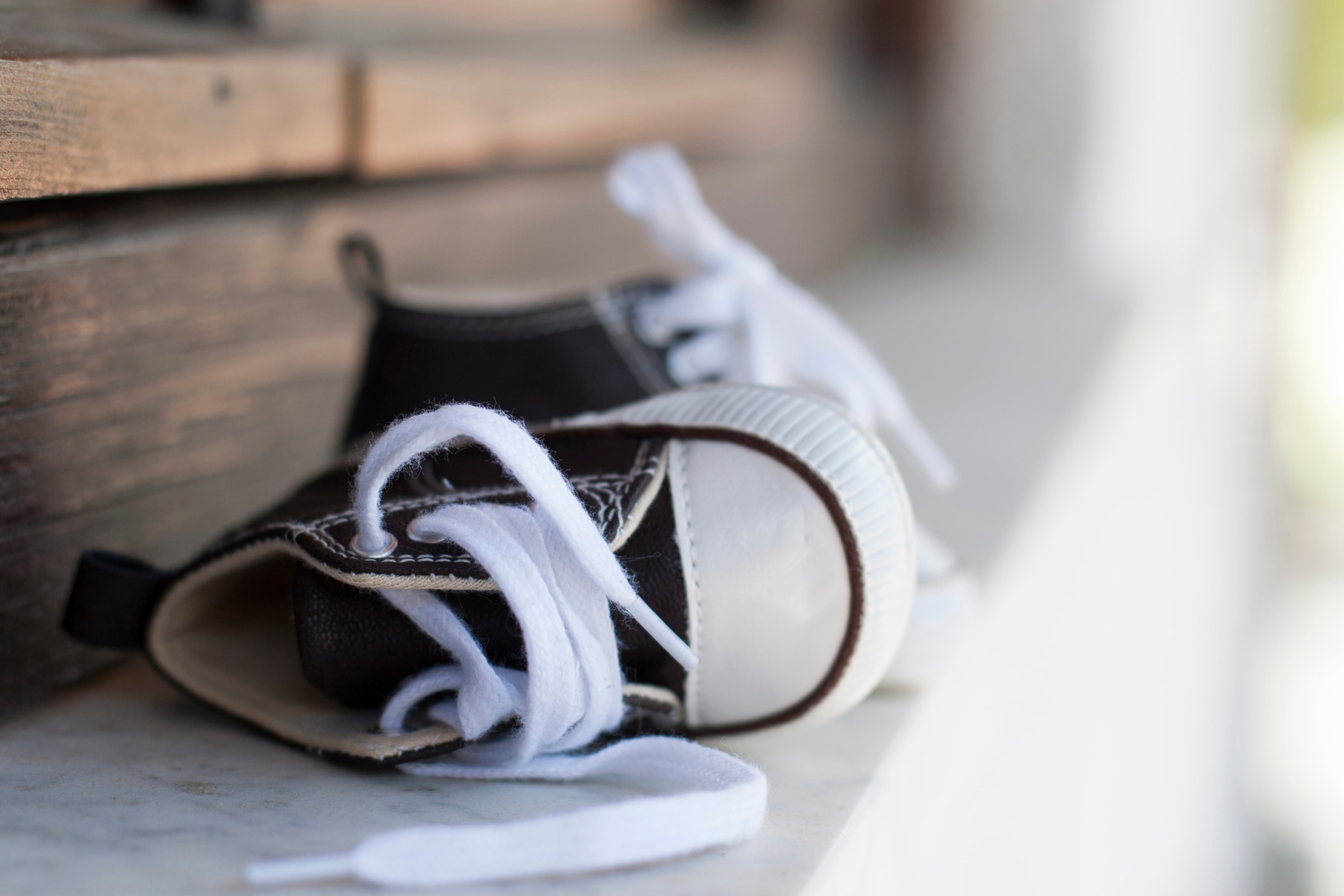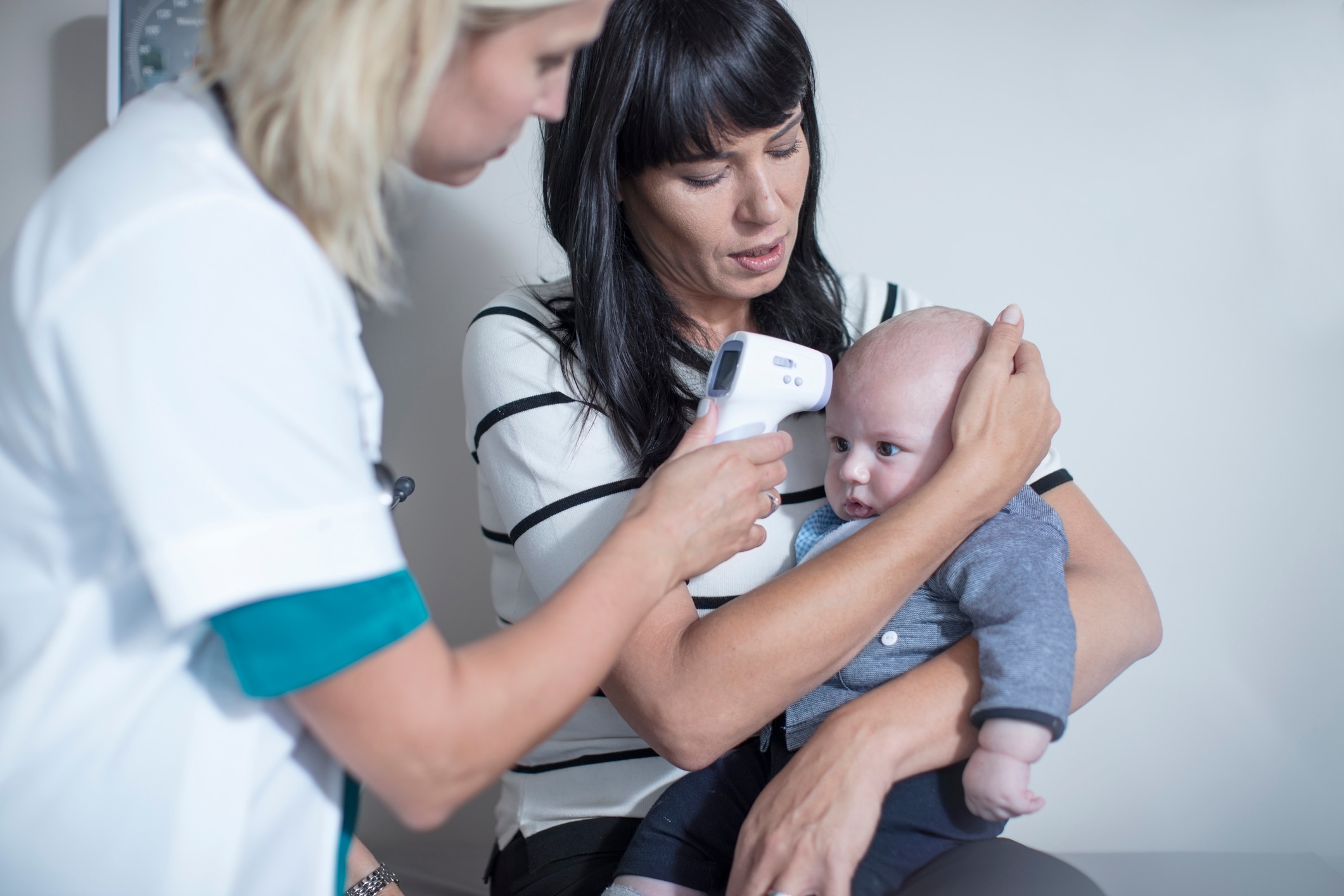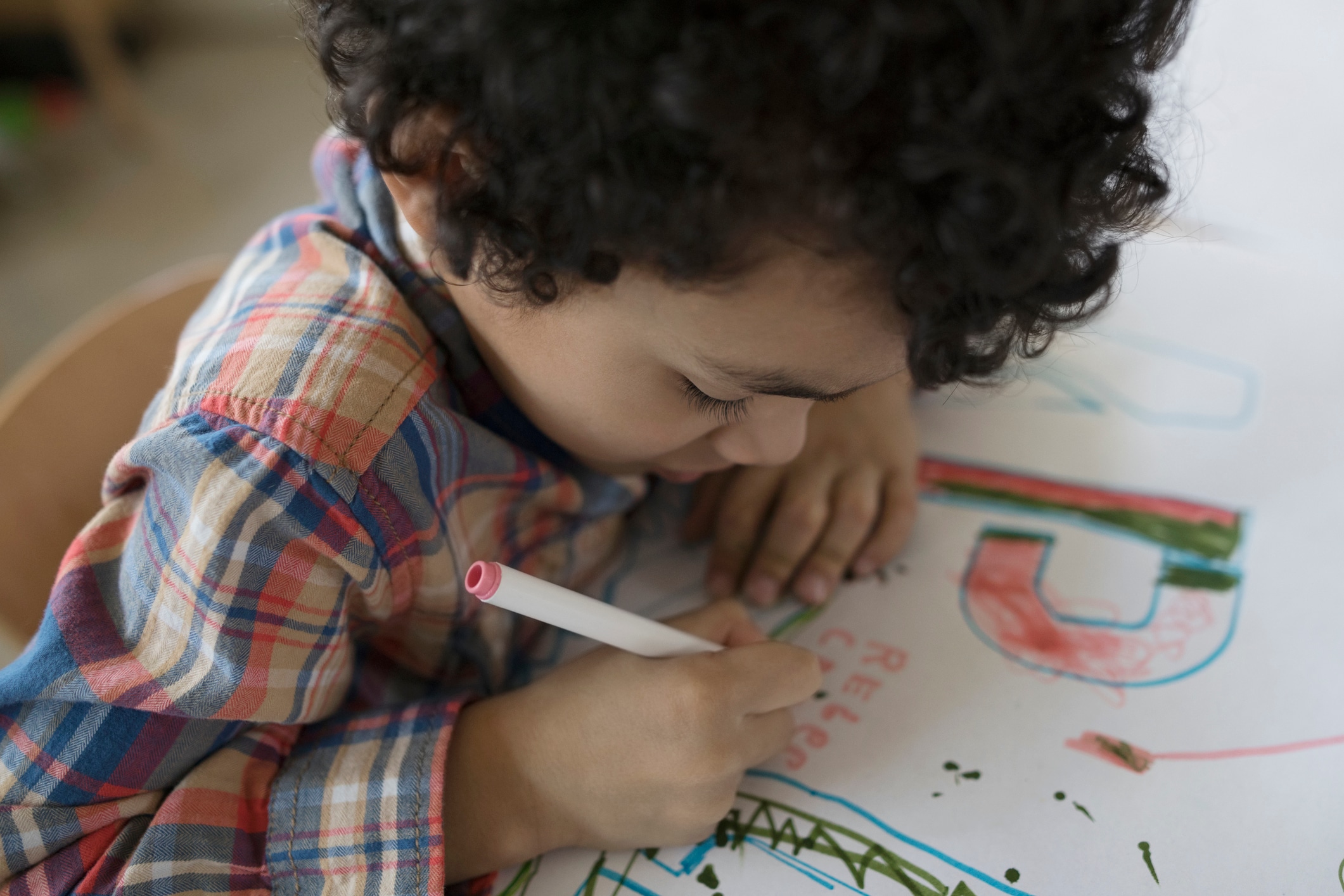When you’re the parent of a baby, you’ll come across countless hot button topics. There’s breastfeeding versus bottle feeding, day cares versus nannies (not to mention working versus staying home) and the timing (and technique) of solid food introduction, to name a few. But few topics get moms and dads talking (debating) quite like sleep training. But does it deserve all the controversy it drums up? According to the experts, when you break it down, not really. Especially since the term “sleep training” is oft misunderstood.
“Sleep training is a broad term that refers to helping a baby get adequate sleep to be as rested as possible and function the best they can,” explains Dr. Danielle Street Stephens, a pediatrician at Holston Medical Group in Kingsport, Tennessee. “There is no right time or way to sleep train, as it’s completely personalized by the family and the baby. There is a wide range of techniques and tricks that can be used across babies the same age or even siblings. It all depends on their personality and the family’s goals.”
Want the facts — and nothing but the facts — about sleep training? Here, pediatricians, psychologists and sleep experts break it all down.
“Sleep training is a broad term that refers to helping a baby get adequate sleep to be as rested as possible and function the best they can.”
— DR. DANIELLE STREET STEPHENS, PEDIATRICIAN
What is sleep training, really?
The term “sleep training” gets a bad rap since, for some, it conjures an image of a lonesome baby screaming in a room while their parents listen from the hallway and refrain from soothing. While this, technically-speaking, may be a route some take, it’s generally not how sleep training is done.
“Sleep training is any action taken by a parent or caregiver to change a child’s sleep habits,” explains Dr. Jocelyn H. Thomas, a psychologist in the Department of Child and Adolescent Psychiatry and Behavioral Sciences and a member of the Sleep Center team at the Children’s Hospital of Philadelphia. “It is the process of teaching a baby to fall asleep on their own, or self-soothe, at bedtime and natural awakenings during the night.”
While there are a number of sleep training methods that offer step-by-step instructions, including two of the more well-known ones — gradual extinction (the Ferber method) and cry it out (CIO) — sleep training is open for interpretation. That being said, Dr. Nina Alfieri, a pediatrician at Ann & Robert H. Lurie Children’s Hospital of Chicago, notes that the following are considered general principles of sleep training:
Promoting day-night differentiation
“This is usually done by doing active things with the baby during the day, such as going on walks, opening the curtains to allow allowing daylight in and playing, and allowing the baby to anticipate night time by having a bedtime routine, such as bath time, a book, singing a soft song and changing into pajamas,” she says.
Having a night time plan
“Parents should plan for what they’re going to do when the baby wakes at night and cries,” explains Alfieri. “Basically, decide how long you wait to go into their room and how much interaction do you plan on having?”
She elaborates, “The idea here is to provide some degree of reassurance and security while also promoting the baby’s ability to gradually self-soothe and fall back asleep on their own. What this looks like can be different for each family, which is why an individual approach is best.”
Consistency
“Keep the schedule, routine and sleeping environments generally consistent so the baby anticipates sleep and gets ready for it,” says Alfieri.
Stephens recommends waiting between six and nine months before starting any formal techniques, but notes that parents can start practicing good sleep hygiene habits, including a night time routine, when their baby is just a few days old. “Around three months, parents can work on moving the last feeding to the beginning of the routine and trying to put the baby down drowsy but awake to slowly help promote self-soothing as baby falls asleep,” she adds.
Pros of sleep training
How you decide to sleep train is up to you (and your baby), but here are the benefits of sleep training, according to the experts:
Children learn how to self-soothe
According to Dr. Gregory Young, a pediatric psychologist and board certified behavior analyst (BCBA) at Franciscan Children’s in Brighton, Massachusetts, sleep training teaches children how to soothe themselves to sleep and cope with distress.
“Children need to learn how to independently soothe themselves to sleep for several reasons,” he explains “One is that if you want your child to be able to fall asleep alone, this is a skill they will eventually need to learn. Second, after the fourth stage of sleep (REM), you return to stage one, which is characterized by an increase of arousal.”
Young continues, “This is the stage that you may become slightly more awake and notice that you are hot or that your spouse is snoring. This is a natural stage of sleep that will occur every 45 to 90 minutes of your child’s sleep. If your child cannot soothe themselves to sleep, they risk developing a sleep dependency on a caregiver and may struggle to continue to sleep after returning to stage one.”
Simply put: For parents who want their children to sleep independently, sleep training can teach kids to fall asleep — and stay asleep — on their own.
Cognitive and behavioral benefits
“Better sleep for the infant can lead to cognitive and behavioral benefits, as it allows the baby’s brain to recharge so they can actively learn and explore the world around them when they wake up,” notes Alfieri.
“Better sleep for the infant can lead to cognitive and behavioral benefits, as it allows the baby’s brain to recharge so they can actively learn and explore the world around them when they wake up.”
— dr. nina alfieri, pediatrician
Stephens adds, “Uninterrupted, adequate sleep — which is attained quickest and most directly through sleep training — is crucial for the positive mental and physical performance of people of all ages, including babies. If proper sleep techniques aren’t developed early, they could continue into adolescence, which can lead to behavior concerns because they’re not rested or sleep medication if the issue persists.”
Better sleep for parents
“Better sleep for the family is a huge benefit of sleep training,” says Alfieri. “There are many known benefits of better sleep for adults including improved mental health and decreased daytime sleepiness to name a few.”
Promotes bonding
When both the parents and the baby are well-rested, parent-child bonding may be easier. “Multiple studies have shown short-term improvements in child sleep quality, maternal mood, and secure attachment between parents and babies after sleep training,” says Thomas.
Better naps
“This was something I learned with my baby when I sleep trained her,” says Stephens. “A common misconception is that if a baby doesn’t sleep well at night, they will nap better. But, often the opposite happens because the baby is overtired.”
Potential help for parental mood disorders
Dr. Rebecca Unger, a pediatrician at Northwestern Children’s Practice in Chicago, notes, “Sleep training optimizes healthy sleep patterns and eventually sleep schedules. There is good evidence that sleep training can improve parental mood disorders.”
Optimal sleep habits in children is associated with a “decrease in behavior problems such as temper tantrums,” says Unger.
Cons of sleep training
Here are the drawbacks of sleep training, according to the experts:
The experience increases a baby’s cortisol levels
“Some have argued that cortisol levels in children who are going through sleep training increase,” says Young. “This is true if you test levels while the child is in the middle of the crying, as is true with any child who is crying.” He adds that research has shown that by morning, all hormonal levels normalize, and there are no lasting negative side effects for the child.
Figuring out “the one” can be stressful
“One of the biggest drawbacks of sleep training is that there are many different methods, and it can be difficult to figure out which one to try and when,” says Alfieri. “There isn’t a particular formula or a ‘one size fits all’ method that works for all babies.”
She points out that you can touch base with your child’s pediatrician to figure out which method might work best for your baby and your family.
It’s gut-wrenching
“Sleep training, just like any other behavioral strategy to manage a child’s behavior, can be stressful for parents because the target behavior often gets worse before it gets better,” explains Young.
Stephens adds, “Something I hear a lot of parents say is the hardest part of sleep training is the emotional and mental toll it can take
You may face social pressure
“When going through sleep training, parents often question themselves and feel guilty for not responding to their young child’s crying — I know I did, despite knowing the research,” says Young. “This guilt is amplified by the endless online forums, social media posts and chats that demonize sleep training and claim that it is harming children, even without scientific support.”
“When going through sleep training, parents often question themselves and feel guilty for not responding to their young child’s crying — I know I did, despite knowing the research.”
— DR. GREGORY YOUNG, PEDIATRIC PSYCHOLOGIST
Cherise Boyd, a mom of two in Annandale, New Jersey, was initially embarrassed that she decided to sleep train her daughter. recalls, “I knew it was the right decision, but I was worried people would think I was a bad mom,” she says. “But when we were all happier and better-rested, I stopped caring about what other people thought.”
It can be very difficult with older kids
“Sleep training older children is much more difficult than sleep training a young child,” notes Young. “Older children who can walk and talk can make sleep training very hard and often the support of a trained professional is recommended.”
The bottom line on sleep training your baby
There is no research that suggests long-term risks or benefits to sleep training, according to Thomas. On the one hand, studies have found that sleep training does not cause long-term emotional or mental stress on children, and on the other, studies have found the initial results of sleep training don’t always stick. At some point down the line, kids may wake up during the night again. In other words: You have to weigh the pros and cons, and choose what’s best for your family.
“You’re the expert on your child and family, so you should pick the time and method to teach the skill of self-soothing that works best for you, while maintaining safe sleep practices,” says Thomas.
Stephens adds that the American Academy of Pediatrics (AAP) recommends sleeping in the same room (not bed) as your baby until they’re 12 months old, but “recognizes it is safe to move your baby out at six months or older, which is about the time parents may choose to start sleep training.” Other AAP recommendations for safe sleep are making sure baby is put down to sleep on their back, ensuring they have a firm mattress and making sure they aren’t too hot.
If you’re interested in sleep training, it’s also a good idea to speak with your child’s pediatrician. “Second to you, your pediatrician knows your baby the best and can give personalized advice on if it makes sense for your family, and if so, when to start and guide you through the process,” says Stephens. “However, any advice always comes with the caveat of following your gut.”





